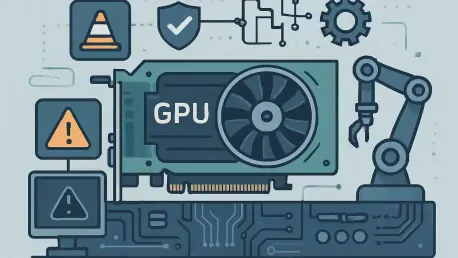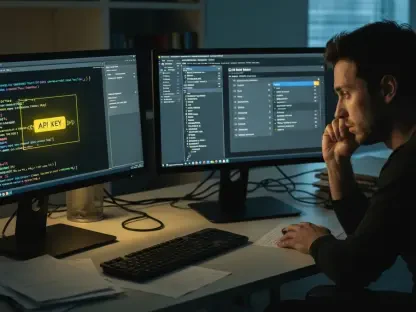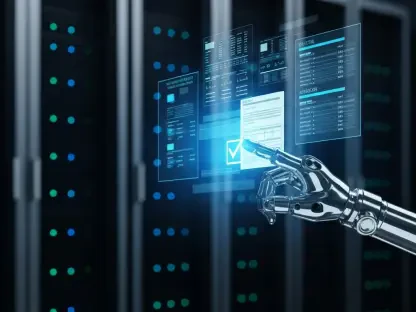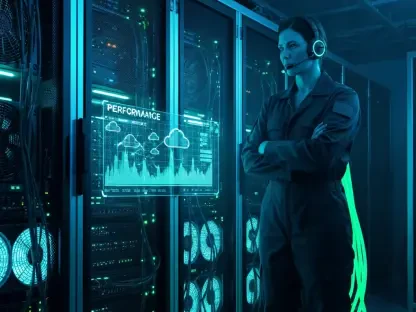In an era where safety-critical industries like automotive, healthcare, and industrial automation increasingly depend on GPU-accelerated computing for groundbreaking applications, ensuring software reliability has never been more vital. Qt Group has stepped up to this challenge with a transformative update to its Axivion toolset, specifically in version 7.11, by integrating automated safety checks for Nvidia’s Compute Unified Device Architecture (CUDA) C++ coding guidelines. This advancement targets developers who harness Nvidia GPUs for parallel computing tasks beyond traditional graphics, such as self-driving car systems, medical imaging scanners, and robotics. These fields demand strict adherence to safety and quality standards, making compliance a cornerstone of innovation. By embedding Nvidia’s recently released guidelines into Axivion, Qt Group is paving the way for streamlined development processes in regulated environments, addressing a critical need for robust, error-free software in complex, high-stakes applications.
Enhancing Safety in GPU-Accelerated Development
The integration of automated Nvidia CUDA C++ guideline checks into Axivion 7.11 marks a significant leap forward for developers working in regulated industries. This update focuses on automating compliance with multiple safety and security standards, including MISRA, CERT, and custom organizational policies, alongside Nvidia’s specific benchmarks for GPU-accelerated code. By embedding these checks natively, the tool allows developers to validate their work swiftly against industry-recognized standards, minimizing manual oversight. This is particularly crucial in sectors where software failures can have catastrophic consequences, such as automotive systems adhering to ISO 26262 or medical devices meeting IEC 62304 requirements. The automation not only saves time but also reduces human error, enabling teams to prioritize innovation over repetitive compliance tasks while maintaining the integrity of their codebase in high-pressure development cycles.
Beyond automation, Axivion 7.11 offers early detection of critical issues that could compromise software safety, such as bugs, dead code, and unsafe dependencies. The tool provides full traceability and evidence-based audit trails, ensuring that developers can demonstrate compliance with stringent regulations during audits. This feature is invaluable for maintaining software integrity across both standard C++ and CUDA codebases, supporting concepts like Freedom from Interference (FFI) in mixed environments. Additionally, the system helps mitigate technical debt by identifying compliance gaps early, ensuring that the software architecture remains consistent and deployment-ready. For industries relying on AI, deep learning, and 3D graphics, this capability translates to safer, more reliable applications, reinforcing trust in GPU-accelerated solutions where precision and dependability are non-negotiable.
Addressing Industry Trends and Future Needs
The broader trend of increasing reliance on GPU-accelerated computing for complex applications underscores the growing demand for tools like Axivion to enforce safety and robustness. As industries push the boundaries of technology with advanced systems, the risk of “software erosion”—violations of coding policies that could lead to future failures—becomes a pressing concern. Juhapekka Niemi, Senior Vice President at Qt Group, has highlighted that modern quality assurance extends beyond mere bug detection to proving the absence of such erosion. By automating Nvidia CUDA C++ guideline enforcement, Axivion addresses this challenge head-on, providing standardized metrics for code safety. This reduces stress for developers tackling both new projects and legacy systems, ensuring that safety remains a priority even as project complexity scales upward in regulated sectors.
Looking ahead, Qt Group’s commitment to evolving Axivion with industry needs is evident in plans to incorporate additional features like memory safety checks and data-flow analysis. These enhancements aim to further strengthen the tool’s capabilities, keeping pace with the rapid advancements in GPU computing and safety requirements. The update to version 7.11 reflects a pivotal shift toward automation and standardization, setting a benchmark for how static code analysis and architectural verification can support regulated industries. This forward-thinking approach not only addresses current challenges but also anticipates future hurdles, ensuring that developers have the resources needed to build reliable software. The consensus in the industry points to such automation as a game-changer, solidifying Axivion’s role as a trusted solution for safety-critical software development.
Reflecting on a Milestone in Software Safety
Looking back, Qt Group’s integration of Nvidia CUDA C++ guideline checks into Axivion 7.11 proved to be a defining moment for developers in safety-critical fields. This update streamlined adherence to essential standards, automated the detection of potential errors, and upheld robust software architecture, ultimately fostering dependable GPU-accelerated applications. For industries where compliance was once a cumbersome manual process, this advancement offered a sigh of relief, allowing innovation to take center stage. Moving forward, stakeholders should consider leveraging such tools to maintain a competitive edge, ensuring that safety and quality remain integral to development pipelines. Additionally, keeping an eye on Qt Group’s planned enhancements could provide early access to cutting-edge features, further strengthening software reliability. This milestone serves as a reminder that embracing automation in compliance efforts is not just a convenience but a necessity for future-proofing technology in regulated environments.









